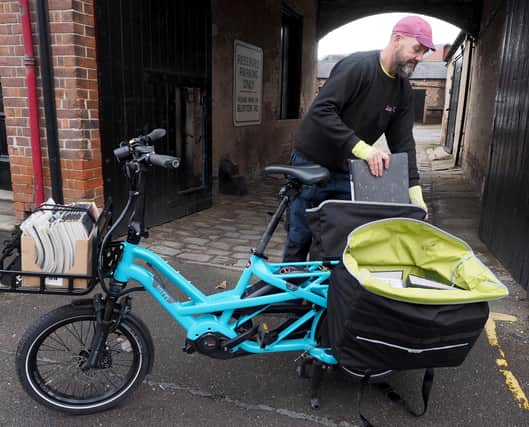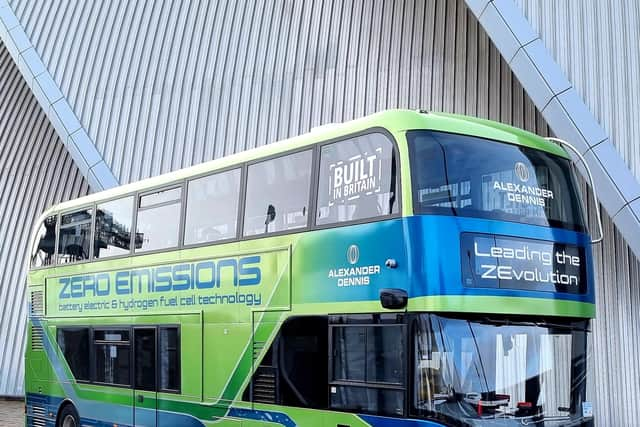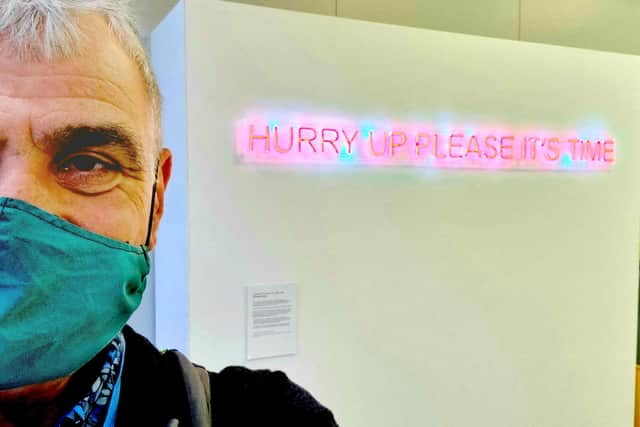"Why not build neighbourhoods for walkers in Sheffield?"


“The sort of place where you give a local friend the keys to your house to feed your cats.”Pete Zanzottera, from the South Yorkshire Mayoral Combined Authority, was invited to speak with Chris Boardman and Sir Patrick Vallance at COP26 earlier this month, as deputy for our Active Travel Commissioner, Dame Sarah Storey.
“The conference was an incredible circus that comes to town, with hundreds of private jets, motorcades, and a very big carbon footprint,” said Pete.
Advertisement
Hide AdAdvertisement
Hide Ad(He travelled from Yorkshire to Glasgow by train and bike. People asking other people to change their ways need to do the right thing themselves, he observes).“The electric car lobby had a massive foothold on Transport Day, and it was really hard to overcome the noise that substituting your petrol or diesel vehicle for an electric one will be the action from transport that stops climate change,” he said. “And unfortunately it’s not”.


Electric cars need lots of raw metals mined from the ground, they cost a lot to make, and are still far too expensive for most people, he explained. And his co-delegates on Transport Day, Living Streets, noted that heavy electric cars, vans and HGVs should not be termed ‘zero emission’ because they produce tiny particulate matter from brakes, tyres and the roads they move on.“Electric cars are the same size as petrol cars, they don’t do anything about congestion and they don’t make the spaces in your neighbourhood any nicer,” said Pete. The COP26 conclusion from most delegates was clear, he said: “We need to own fewer cars, and drive them less often.”
And that can begin to happen in places where cars don’t dominate, say Pete and Dame Sarah, where people feel safe and happy to leave the car behind more often and walk or cycle to local destinations. Places where families may eventually conclude that they don't need two cars after all, places where being out and about more helps you meet your neighbours, and your local shopkeepers. Like we did a bit more under the pandemic, Pete observes.
“Many of of us spent 18 months in our local neighbourhood, and our local neighbourhood is better for it. We’ve all got to know local people better.”So in South Yorkshire, the active travel team are working with local authorities on neighbourhoods where it’s easier to get around on foot or by bike, where cars don’t dominate the streets, and where people can get most of what they need within a few minutes.
Advertisement
Hide AdAdvertisement
Hide AdThere’s a lot of work to be done, said Pete, who says Heeley is an example where a redesigned local ‘public park’ and old buildings brought back into use for local businesses starts to meet the aim of making the kind of neighbourhood we should be seeing everywhere.


Although there’s more work to be done on Heeley’s transport links, Kelham Island shows how more walking and less driving can make a difference, and upcoming work in Darnall, Nether Edge and Crookes - and the city centre - should also make a difference, “If we’re serious about a low carbon neighbourhood, it needs to be a place where people feel safe, and feel they belong,” Pete said.
He says the idea is not new, citing older Sheffield Council estates designed for walking to local facilities. And given that walking is the most popular form of urban transport, and a third of county households don’t have a car, why not start building neighbourhoods for walkers?
COP26 in the UK has got people talking, says Pete, who will now be working with Dame Sarah on more plans.
“We need to carry on what we’re doing, and do more .”